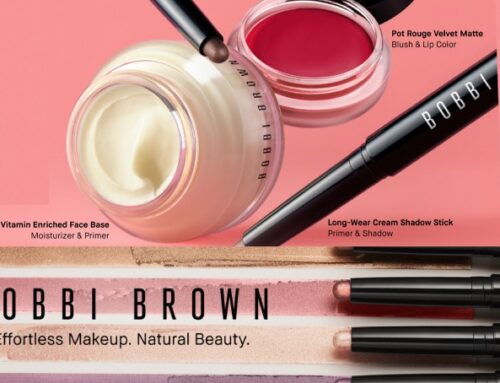Fortune Favors the Gold: Expert Highlights a Little-Known Game-Changing Investing Strategy
June 4, 2025
(Image credit: Getty Images)
If there’s one word to describe investment markets today, it’s “uncertain.” And if there’s one asset that people turn to in times of uncertainty, it’s gold. No wonder the shiny metal has spent most of 2025 hitting all-time highs.
But not all gold investments are the same. And if you’re not aware of a relatively obscure but strong-performing corner of the gold investment universe, it could be costing you.
Investors tend to approach investing in gold in one of two ways. One is by owning bullion like gold coins or bars.
Sign up for Kiplinger’s Free E-Newsletters
Profit and prosper with the best of expert advice on investing, taxes, retirement, personal finance and more – straight to your e-mail.
Profit and prosper with the best of expert advice – straight to your e-mail.
The Kiplinger Building Wealth program handpicks financial advisers and business owners from around the world to share retirement, estate planning and tax strategies to preserve and grow your wealth. These experts, who never pay for inclusion on the site, include professional wealth managers, fiduciary financial planners, CPAs and lawyers. Most of them have certifications including CFP®, ChFC®, IAR, AIF®, CDFA® and more, and their stellar records can be checked through the SEC or FINRA.
Whether you take direct possession of the metal yourself or hold securities that represent bullion, this type of investment involves the ownership of physical gold. The stuff that’s been dug out of the ground, refined, poured and likely stamped with a weight, purity and, in the case of bars, a serial number.
The price of bullion consists of the spot gold price plus the gold premium. Why is there a premium? Because there are extra costs associated with acquiring physical gold, like distribution and dealer markups.
Why invest in gold miners?
Then there are gold miners. Instead of buying the end product, you’re investing in the companies that dig this valuable stuff out of the ground.
The gold mining business can be a headache. Exploration is risky. Machinery is expensive. Workers go on strike. Local governments can be challenging to work with.
So why expose yourself to the risks these companies face? Operating leverage. When the price of gold is high, mining companies typically see their revenue, earnings and profitability rise.
After all, it costs them the same amount to recover the gold whether prices are up or down. Any increase in price is practically pure profit that drops straight to the bottom line.
Because of this phenomenon, gold mining stocks can potentially outperform the physical metal by a wide margin during a gold bull market.
How should you invest in gold?
A lot of it boils down to your preferences. We’re not going to tell you there is a single best way for everyone — that doesn’t exist.
In fact, we want to encourage you to think beyond bullion and miners. There’s another way to invest in gold. It provides leveraged upside like the miners, but without most of the headaches.
And it’s performed better than both physical gold and gold miners over the past several years. We’re referring to a unique group of businesses called gold royalty companies.
When you hear the word “royalty,” you might think of the royalties a musician receives when someone buys their album, or an actor’s cut when their movie plays on TV.
Gold royalty companies are similar, only their payment comes from taking a portion of the gold production from a specific mine. This is their return for providing financing to mining companies for their exploration and production projects.
In that sense, gold royalty companies act like venture capitalists.
Three favorite characteristics of gold royalty companies
What’s so great about gold royalty companies? Plenty. But here are our three favorite characteristics:
They’re diversified. Even the largest gold miners in the world typically have fewer than a dozen active mining operations going at any given time. Contrast that with gold royalty companies, who often have royalties on hundreds of mining assets.
One of the largest, Franco-Nevada Corporation (FNV), has 118 cash-flowing assets and an additional 314 in various stages of exploration. This diversification reduces risk and provides a pipeline for future sources of revenue.
They’re sturdy. Like gold miners, royalty companies benefit when the price of gold goes up. But unlike miners, the royalty business is immune from many of the headaches that come with operating a mine.
Remember, owning a royalty means getting paid a portion of the production of the mine. Production — not profits. Labor and machinery costs going up? Not the royalty company’s problem. Local government needs a kickback for the miner to get their concession renewed? Not the royalty company’s problem.
They’re profitable. At the end of the day, these are companies that operate extremely lean — typically with just a few dozen employees and minimal overhead — and that means keeping a lot of their revenue as profit.
Think net profit margins in the 40%-plus neighborhood. That compares favorably to just about any company you could think of, including some of the most profitable companies in the world, like Apple (AAPL), Alphabet (GOOGL), Microsoft (MSFT) and Meta Platforms (META).
Looking for expert tips to grow and preserve your wealth? Sign up for Building Wealth, our free, twice-weekly newsletter.
With traits like these, it’s no wonder royalty companies have been spectacular performers. You can see for yourself in the table below, which compares the “Big Three” royalty companies to ETFs focused on gold miners (GDX) and gold bullion (GLD). We chose to start the analysis at the beginning of 2008 because Franco-Nevada went public late in the prior year.
Swipe to scroll horizontally
|
Wheaton Precious Metals (WPM) |
516% |
|
Franco-Nevada (NV) |
1,270% |
|
Royal Gold (RGLD) |
613% |
|
VanEck Gold Miners (GDX) |
27% |
|
SPDR Gold Shares (GLD) |
268% |
|
Source: FactSet |
Row 5 – Cell 1 |
Does this mean that you should invest only in royalty companies for your gold exposure? We don’t believe so. For one thing, while we remain optimistic when it comes to royalty companies, it is far from certain that this level of outperformance will continue.
Also, there are times when miners do better and times when physical gold does best. And, of course, there are times when royalty companies shine brightest.
Owning them in combination, like we do in our gold strategy at Stansberry Asset Management (SAM), reduces volatility. We’re able to add or reduce exposure depending on the opportunities available, while avoiding the risk of going all in on any one category.
Still, we’d encourage you to keep gold royalty companies in mind as a valuable tool in your gold investing toolkit.
Related Content
TOPICS
Profit and prosper with the best of Kiplinger’s advice on investing, taxes, retirement, personal finance and much more. Delivered daily. Enter your email in the box and click Sign Me Up.
Search
RECENT PRESS RELEASES
Best Echo deal: Save $35 on the Echo Spot at Amazon
SWI Editorial Staff2025-12-15T06:15:29-08:00December 15, 2025|
Bobbi Brown Cosmetics Launches on Amazon Premium Beauty
SWI Editorial Staff2025-12-15T06:14:54-08:00December 15, 2025|
Prediction: Bitcoin Will Be Worth $270,000 in 5 Years
SWI Editorial Staff2025-12-15T06:13:06-08:00December 15, 2025|
Strategy (MSTR) Acquired 10,645 Bitcin (BTC) Last Week
SWI Editorial Staff2025-12-15T06:12:42-08:00December 15, 2025|
Morning Bid: Stocks catch a break after bruising AI selloff By Reuters
SWI Editorial Staff2025-12-15T06:11:50-08:00December 15, 2025|
Nike stock outlook unchanged as Raymond James awaits growth clarity By Investing.com
SWI Editorial Staff2025-12-15T06:11:31-08:00December 15, 2025|
Related Post




